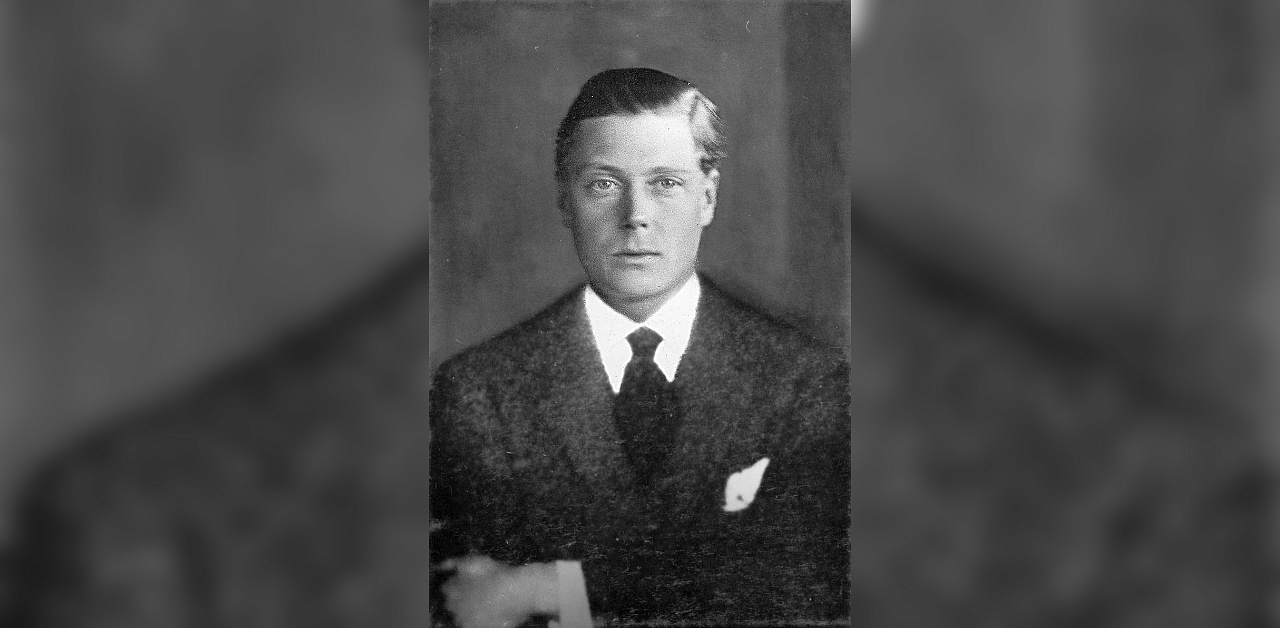
Ninety-nine years ago on this day, the then Prince of Wales had arrived in Patna as part of his royal tour of India, and the first medical college of Bihar and Orissa was named after him to commemorate his visit to what was then a young provincial capital.
Edward, Prince of Wales and son of British monarch King George V, had travelled across the Indian subcontinent from October 1921 to March 1922. And, the historic city of Patna was on his busy royal itinerary.
On the morning of December 22, 1921, he reached Patna via train and steamer from Nepal.
According to archival records, Edward, after landing at the 'Commissioner's Ghat in Patna', drove in semi-state to a grand reception durbar that was hosted in his honour at the Bankipore Maidan -- now Gandhi Maidan.
In the afternoon, he played polo and after dinner at the Government House (now Raj Bhawan), attended an informal reception there, to which a few guests were invited from the young province of Bihar and Orissa, officially born in 1912 with capital at Patna after the historic Delhi Durbar of King George V in 1911.
Among the invited guests was Rai Bahadur Radha Krishna Jalan of the legendary Quila House in Patna City. He was a businessman and a noted personality of his time.
Aditya Jalan, 43, the current scion of the Jalan family and his great grandson, said R K Jalan was also a great collector of arts and meticulously preserved all the invitation cards and pamphlets related to the events that he attended in those days.
"The invites and other documents related to the royal visit of Prince of Wales to Patna is in my archives now. The invitation cards, include for events like the grand durbar, separate one for him and his wife, and the Government House reception the same evening," Aditya Jalan told PTI.
Today is the exact day when 99 years ago, that historic durbar was held, but people have forgotten the history, he rued.
"The next day a garden party was given by the Behar Landholders Association to the Prince of Wales at the historic Hardinge Park during his two-day visit to Patna. The invitation card that was sent to my great grandfather has a rather royal look, with a photo of Prince Edward printed on top in an artistic frame, flanked by his royal crest and motto 'Ich Dien' (I serve)," Aditya Jalan said.
Among his archives are also correspondences between R K Jalan and government officials when the Prince of Wales fund for the medical college was being raised.
"A letter of May 1922 talks about the plan to sell flags left over from the Prince of Wales' visit in 1921, proceeds of which would go to the college fund. Another one mentions about some money from the leftover of the Prince of Wales Reception Fund being given to start a leper dispensary in Patna," Aditya Jalan said.
The prince, who later became King Edward VIII, wrapped up his Patna visit and left on the night of December 23 for Calcutta, where he also spent Christmas and inaugurated the iconic Victoria Memorial Hall -- whose foundation stone was laid by his father in 1906 during his royal tour as the then Prince of Wales.
Four years after Prince Edward's visit, Bihar and Orissa's first medical college -- The Prince of Wales Medical College -- was established in 1925 in Bankipore, not very far from the Maidan where the durbar was held.
The historic medical college, one of the oldest in the Indian subcontinent, traces its origin to the Temple Medical School set up in 1874 in Patna.
The new institution, officially inaugurated two years later after it was set up to commemorate the royal visit of 1921, stands on the banks of Ganga as a "priceless heritage of the city".
However, a few decades after the Independence, it, too, was renamed to Patna Medical College and Hospital or PMCH, as it is popularly known today.
A huge marble plaque, bearing the old name of the college and the Prince of Wales royal crest, installed right outside the principal's office, however, tells the story of its inception and the prestige it enjoyed earlier, all but faded now.
The plaque reads that the college was established in 1925 and formally inaugurated by the then Sir Henry Wheeler, the then lieutenant governor of Bihar and Orissa, on February 25, 1927.
"An official opening ceremony was held and in my archives. I have also found an invitation card for the event sent to my great grandfather," Aditya said.
The sprawling college campus is dotted with historical buildings, including the Bankipore General Hospital and Women Hospital, which were equipped with special lifts in that era, the main administrative building, and physiology and anatomy departments, among other structures.
However, this heritage is threatened as its iconic, old buildings are proposed to be dismantled in multiple phases as part of a redevlopment plan of the Bihar government that was drawn up few years ago and faced opposition from its alumni spread across the world.
Prateek Nishant, a PMCH alumnus whose great grandfather, Tarini Prasad Sinha, was among the first-graduating batch in 1927, said: "It's sad, this pioneering institution has been shorn of its glory first and now we might lose the old heritage, too, which should be preserved for posterity."